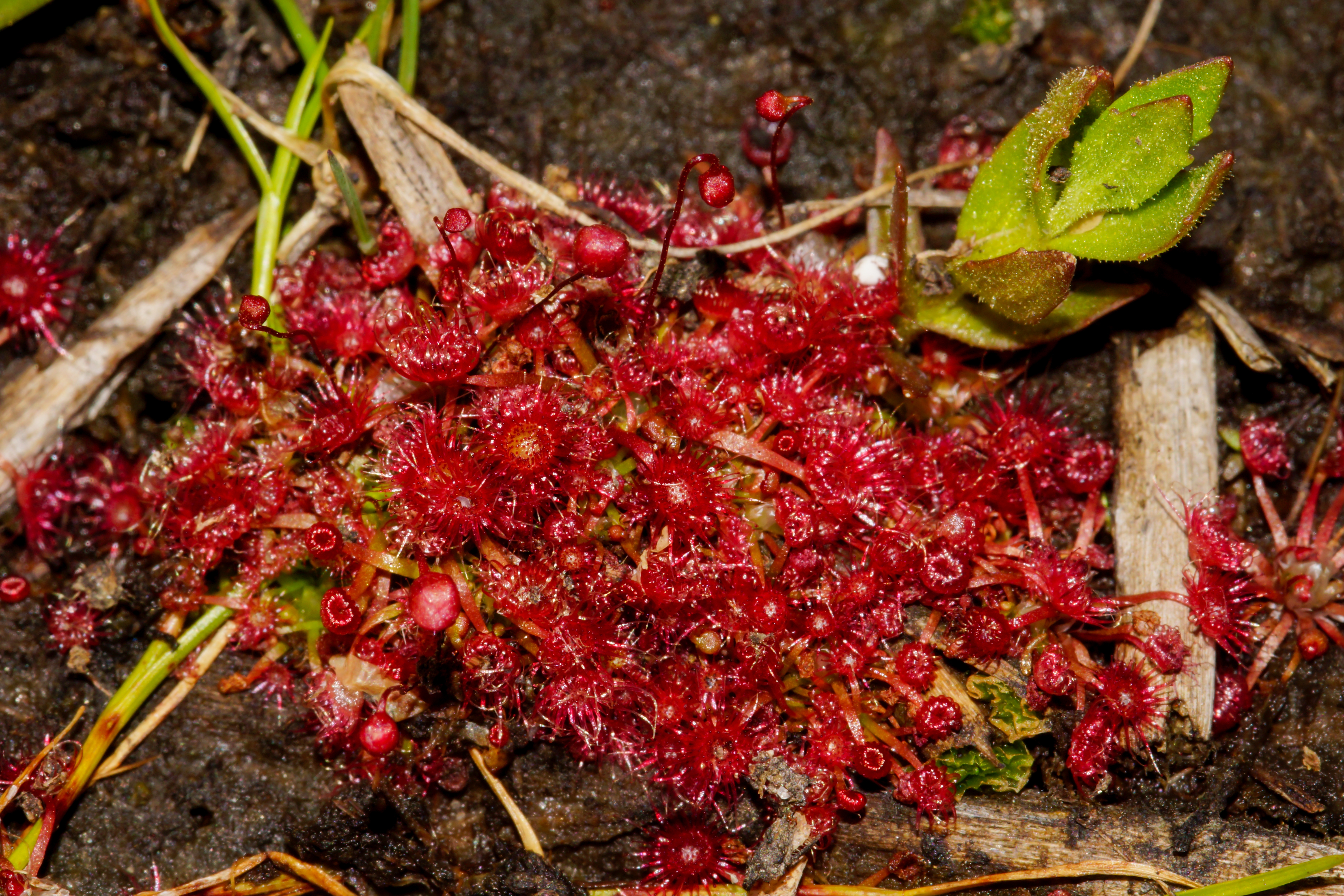Tiny sundew
(Drosera pygmaea)

Description
Drosera pygmaea is a carnivorous, rosette-forming biennial or annual herb native to Australia and New Zealand.The specific epithet, which translates as "dwarf" from Latin, is a reference to the very small size of this plant, which grows to between 8 and 18 mm in diameter.Small, pale flowers are produced at the ends of 1- to 3-inch stems. It is perhaps the most well-known of the pygmy sundews. Drosera, which is commonly known as the sundews, is one of the largest genera of carnivorous plants, with at least 194 species. These members of the family Droseraceae lure, capture, and digest insects using stalked mucilaginous glands covering their leaf surfaces. The insects are used to supplement the poor mineral nutrition of the soil in which the plants grow. Various species, which vary greatly in size and form, are native to every continent except Antarctica. Charles Darwin performed much of the early research into Drosera, engaging in a long series of experiments with Drosera rotundifolia which were the first to confirm carnivory in plants.In an 1860 letter, Darwin wrote, “…at the present moment, I care more about Drosera than the origin of all the species in the world.”
Taxonomic tree:







